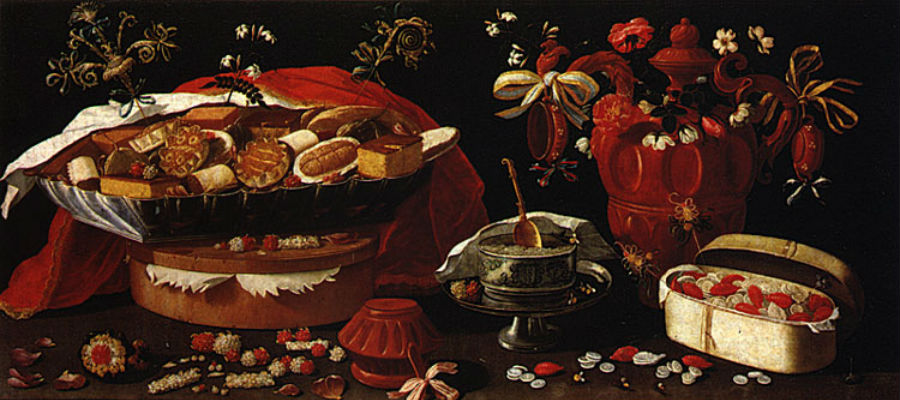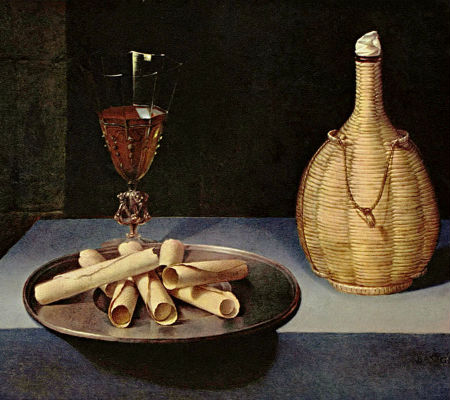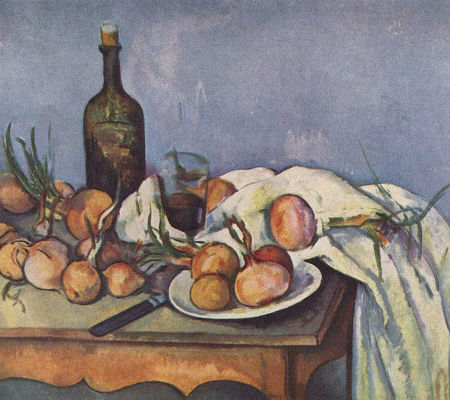Text João Barbosa | Translation Bruno Ferreira
The title might seem odd for some readers but these are two well-defined, sedimented and ancient concepts of painting. The latin languages use the term “dead-nature” whilst the English and German still use (still-life – stilleben) and it’s used in works that encompass food, natural elements and sometimes animals. However, more objects can be added.
Another concept is vanitas, many times associated to still life, and addresses the insignificance or continuity of life, of what’s left of us after death, the vanity (vanitas) defeated…
Yesterday after dinner, I was resting along a glass of wine and staring at a still-life of my father’s (Manuel Jorge – 1924 to 2015), of which I do not have a photo and I dived into Paul Cézanne – that he so much appreciated. With my father’s passing getting close (last year’s February) it occurred to me the vanitas – as far as I know he did not make any – and the reason as why they exist as an artistic motive.
Vanitas is more obvious. But the still-lifes seem more complex to me and I cannot help but notice the two terms to name it: dead or still-alive. The food that keeps us alive, the wine that makes us glow and the sensation that we forgot to do something – clear the table, finishing a piece of fruit, finishing the glass of wine, knocking down objects for some sudden rush.
To note the fact that the food is always shown fresh and tasty with no apparent signs of degradation. If, harvested and hunted or fished, they’ll be dead. The freshness, which is transmitted by the glows belies death. Therefore, the truth lies between the two concepts, the Latin and the Germanic.
These pieces of art are a window for the table pleasures, both the author’s and from other times. Note that, for centuries there was much starvation, which fed many rebellions, diseases, early death or a life span that would astonish us – millennia in which reaching the 40s was quite the achievement, at a time where the death rate at childbirth and childhood was immense.
For that, these art works reflect the dazzling pleasure of food and party, but also loneliness and melancholy. If looking with a sharp eye we can see that the gluttony of once is not much different from today’s.
The sugar, which is an easy access product, was for the rich. To get an example, at an archaeological digging of a burial we can easily see who were the rich and the poor. Some have tooth decay because they could pay for candy and others have outworn molar teeth because they ate bread of the worst flours that contain residues of the millstone.

Josefa de Óbidos painted several still-lifes with cakes
So, the sugar is mostly represented as fruit. Grapes, lemons and oranges are probably the most quoted ones… maybe pomegranate as well. However, pastry was also painted.
Josefa de Óbidos painted several still-lifes with cakes. Lubin Baugin «portrayed» a stripped painting with a bottle, glass of wine and biscuit rolls. The bread was vastly shown, it was the West’s base food of past centuries.

Lubin Baugin «portrayed» a stripped painting with a bottle, glass of wine and biscuit rolls.

Paul Cézanne portrayed onions
In the pleasures area we find oysters, lobster, edible crab, fish, meat… and wine! However, there’s a «delicious» sill-life of Juan Sánchez Cotán with cabbage, pumpkin, cucumber and quince (?)… he must have been on diet. Paul Cézanne portrayed onions. Master Abel Manta chose a sleek lenge that, just by looking at it, transmits the smell of trimetazidine – nitrate responsible for the smell of fish and which makes me go sick and vomit… I leave you with no further intimacies. But the animal is beautiful!
As it had to be, the wine flows abundantly showing what still nowadays fills our soul. To be noted that the wine was a strong source of calories that the poor could drink – so many times has the wine fed Portuguese workers and peasants and until not long ago.
Nonetheless, the wine that is shown was not for the worker’s throat. It is represented by a bottle (luxury) and crystal glasses (thin) – even glass was expensive. Sometimes the chalices are of worked metal. Just a note, beer was also a common presence.
If nowadays consumers prefer red wines (I confess I could not get updated data), the white wine was apparently (in the not very reliable memory) more chosen by the painters. There are many clarets, very far from the reds that please people nowadays.
I said I was done with the intimacy but this one is grounded. My father was a wine enthusiast. But, both of the still-lifes I have of his have flowers, fruit, bread and water.




Leave a Reply